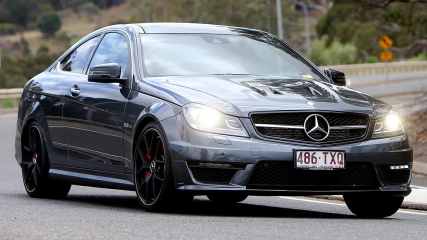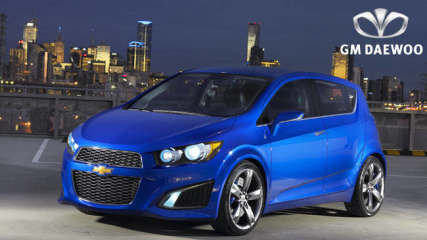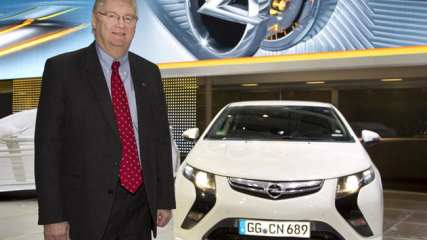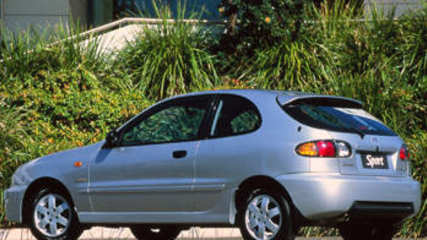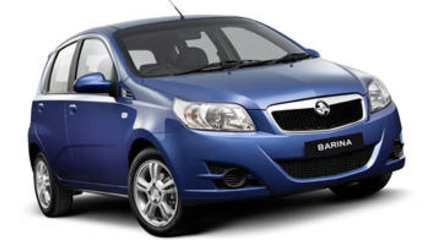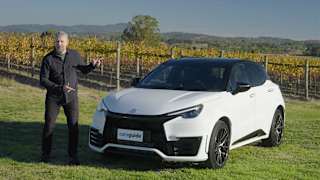Used Daewoo Lanos review: 1997-2002
By Graham Smith · 22 Jan 2009
Daewoo is perhaps better known and respected for its ads featuring Kane the wonder dog than for the cars it has built. There were even some who suggest the use of a dog was appropriate given the quality of the cars the Korean company was building when it arrived here with a rehashed Opel in 1994.Daewoo was hoping to follow in the tyre tracks of Hyundai who’d blazed a trail for other Korean car makers in the 1980s, but the company found it wasn’t as easy as they’d hoped.In the early 1990s Korean carmakers were still rightly regarded with suspicion, and their somewhat dodgy reputation wasn’t helped when Hyundai had to recall Excels for faulty chassis welding.That was the environment in which Daewoo was trying to establish its credentials. The first Daewoos were cheap enough, but based on an Opel from the early 1980s, they were a very dated design, and the build quality was generally below market expectations.The Lanos was one of the new generation of models to come from Daewoo. It was a fresh face for the company best known for its doggie ads, and started the move away from the original Opel-based model.By the mid-1990s Hyundai was setting the small car pace here with its innovative “drive away, no more to pay” pricing policy where it included the on-road costs in the price of the car instead of adding them on as was the general policy.It fundamentally changed the landscape in our most competitive market segment, making it tough for everyone trying to compete in the segment, and make a dollar at the same time.At the time Daewoo was still trying to make an impact on the market, so rather than compete with Hyundai by matching its drive-away pricing, it went a sizeable step further and offered free servicing for the entire warranty period.That meant that Daewoo buyers didn’t have to pay anything for the first three years or 100,000 km until the warranty expired.It was a huge incentive to try the relative newcomer, to take a risk on a brand that was yet to earn its stripes here.While Daewoo dealers appreciated the extra showroom traffic it created, they didn’t necessarily welcome the extra traffic it also created through their service departments. Daewoo customers, it seems, took the offer of free care literally, and headed off to their nearest dealer to have even minor things like failed light globes and punctured tyres repaired or replaced.The marketing men behind the ‘free care’ offer now say privately that they created a monster they’d never dare repeat.The Lanos was launched in the era of ‘free care’ so sales were brisk. It was an attractive small car with clean, smooth lines and available in a choice of four-door sedan, or three or five-door hatch.Power was provided by one of two single overhead camshaft four-cylinder engines, depending on the model.The SE models had a 1.5-litre version of the fuel-injected eight-valver which produced 63 kW at 5800 rpm with 130 Nm of torque, the SX models had a larger 1.6-litre engine which put out 78 kW at 6000 rpm along with 145 Nm.A five-speed manual transmission was standard, and there was also a four-speed auto available.Power steering was standard on all models, except initially on the SE three-door hatch, but that too got assisted steering from 2000.The SE three-door hatch was the entry model, but it still came quite well equipped with colour-coded bumpers, full wheel covers, cloth trim, split-fold rear seat, cup holders, remote release for the fuel filler cap, and four-speaker sound. The SE four-door sedan and five-door hatch also had central locking.For more there was the SX, available as a three-door hatch and sedan, which also boasted alloy wheels, CD player, power front windows, power mirrors, fog lights and a rear spoiler on top of what the SE had.Air-conditioning became standard across all models in 1998, which also saw the addition of the LE sedan and five-door hatch limited edition models based on the SE, but with power front windows, CD player, rear spoiler (hatch) and central locking (sedan).The Sport arrived in 1999. This was a three-door hatch based on the SX with the more powerful 1.6-litre engine, plus a sporty body kit, tachometer, upgraded sound, and a power antenna.Although dealers weren’t exactly enamoured with the free care because of the traffic it generated through their service departments when owners would come in to have the most minor things fixed, it meant that cars like the Lanos were better serviced than they might have been if owners had to pay for the servicing.The free care cover has expired for most cars now, and the earliest examples have now clocked up around 100,000 km, so anyone taking one on is gambling on their continued reliability when they will have to pay for servicing and any repairs that might be needed.Mechanically the Lanos stands up quite well, the engine is robust and doesn’t appear to give much trouble in service. The transmissions also appear quite reliable and give little trouble.While they seem basically sound the Lanos can be let down by the little things. The electrics can be a problem, they appear to have been put together on the cheap, and the chances of problems developing increase with time and mileage.Interior trim parts are another weakness, with breakages of cheap plastic parts a relatively regular occurrence.Barbara Barker probably would have bought a Hyundai Excel had it still been available when she was shopping for a small hatch in 2001, but she didn’t like the look of the Accent that had replaced the Excel. She liked the look of the Lanos and the way it drove, and free care offer, and bought that instead. It’s now done 95,000 km and the warranty has run out, so she’s now in the market for a new car, this time a larger hatch. She says it has good performance, is economical, and has generally been reliable. The exhaust has been replaced, it’s had the brakes replaced, and the idle stepper motor had to be replaced at the 90,000 km service.• attractive styling• well equipped with lots of standard features• zippy performance• reliable mechanics• jury still out on longevity• dodgy electrics• average build qualityApart from dodgy electrics and average build quality they’re generally pretty robust. Trade is reluctant to handle them, but low resale value makes them a cheap buy at the right price.
